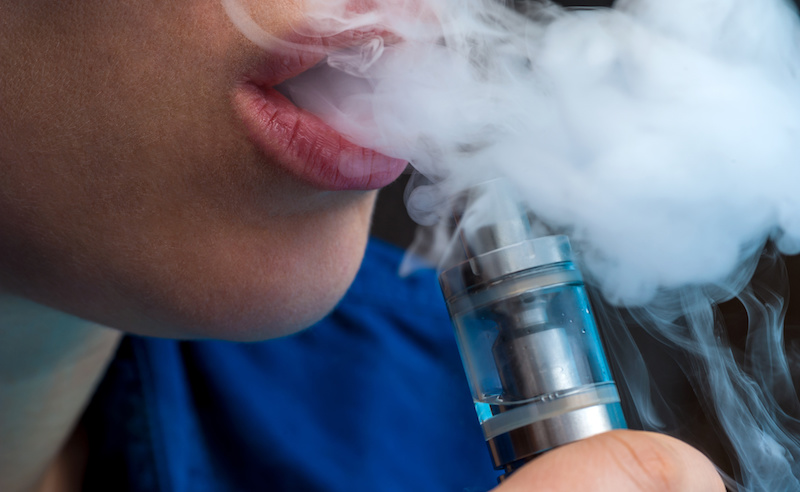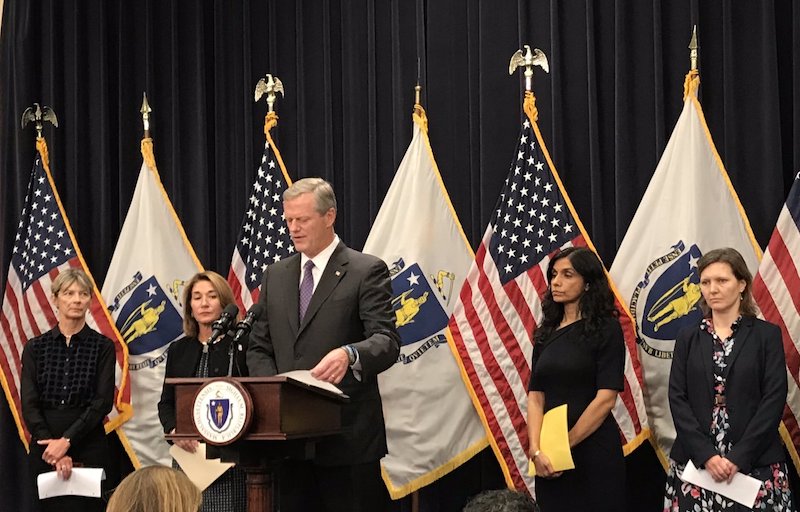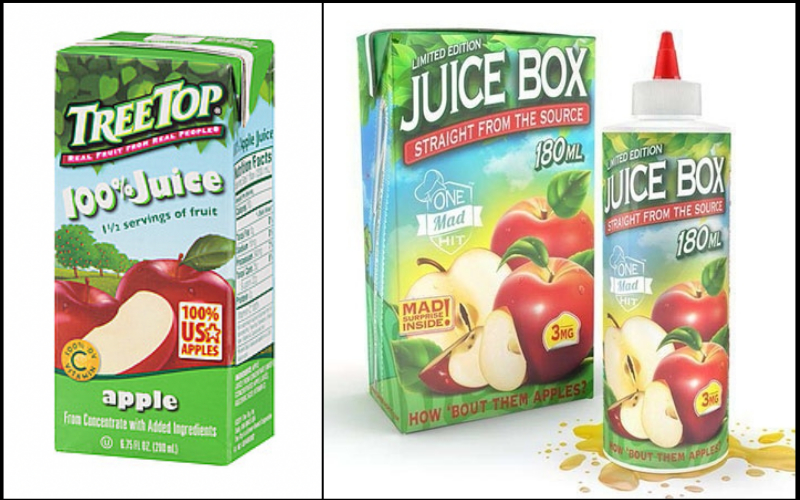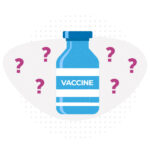What you need to know about vaping to keep children safe

Could your child be vaping? A growing number of middle and high school students today are using vaping products, also called e-cigarettes, JUULs, or dabs (used for vaping marijuana) among other names. Signs and symptoms of vaping can be difficult for parents to notice, but talking with your kids about vaping and monitoring for concerning signs are very important. Nicotine is highly addictive and teens can develop addiction after just a few uses. Teens who use vapes also put themselves at risk for serious, or even deadly, lung disease.
A ban on vaping products
In the wake of hundreds of people around the country hospitalized with vaping associated pulmonary illness, and multiple deaths, Massachusetts Governor Charlie Baker recently imposed a four-month ban in the state on the sale of all e-cigarettes and vape products, including equipment used for vaping marijuana.
Massachusetts is the first state to take such a dramatic stance, and it came about after the governor met with a group of leading health experts on the topic, including Boston Children’s Hospital physicians Dr. Benjamin Raby, chief of the Division of Pulmonary Medicine, Dr. Alicia Casey, co-director of the Interstitial Lung Disease Program, and Dr. Sharon Levy, director of the Adolescent Substance Use and Addiction Program.
While this ban on vaping product sales is a critical step in protecting youngsters from harm, Drs. Casey and Levy stress that parents must also educate themselves and their children on the dangers of vaping. Here, they answer common questions to help parents get up to speed on this pressing issue and they offer suggestions on how best to keep kids safe.

What is vaping, and how does it work?
Vapes are battery-powered devices that contain coils used to heat up a liquid comprised of a mix of chemicals. Most vapes include nicotine, or marijuana as the active ingredient. Some devices are designed with the liquid contained in a tank that can be refilled.
JUUL, the most common vaping device used by kids, is designed to have the liquid in a disposable “pod.” Some people refill the tank or the pods with homemade vaping liquids, which can contain THC (the active ingredient in marijuana), other drugs, or chemicals that enhance the buzz that users experience.
The electronic devices heat the liquid into a fine aerosol mist or vapor that people can inhale. While many kids think that the vapor is harmless, it actually delivers dangerous substances into the lungs that aren’t meant to be there, putting users at risk for serious harm to their pulmonary system.
Signs and symptoms of vaping can be subtle, so we recommend that parents be proactive by talking to their kids and asking lots of questions. No one is immune from this public health epidemic.
While the FDA is currently developing regulations and guidelines for vaping products, they are still largely unregulated as of October of 2019, which means there is no control on what they contain. This is particularly alarming to medical and public health experts. The situation recently prompted the American Academy of Pediatrics (AAP) and partners to sue the FDA for their lack of oversight on such dangerous products targeted to kids. The judge ruled in favor of AAP. Hopefully this victory will ultimately help reduce youth access to vape products.
Why are kids getting addicted to vapes?
Vape liquids contain highly concentrated nicotine or THC. The nicotine contained in one pod can be as much as a whole pack (or even more) of traditional cigarettes. As a result, vaping a single pod can result in nicotine addiction, and also symptoms of nicotine toxicity. Similarly, the concentration of THC in dab pens can result in addiction and in acute mental health impacts.
While e-cigarettes were initially introduced as a smoking cessation aid, the latest research from the National Youth Tobacco Survey (NYTS) shows high school students that use vapes are more likely to smoke tobacco cigarettes. In addition, they are also more likely to use marijuana, alcohol, cocaine, and other drugs.
What is the appeal of e-cigarettes to kids?
Vape pods come in as many as 16,000 flavors designed to appeal to young people — from buttered popcorn and gummy bears to fruit loops and bubble gum. The flavor pods are marketed with engaging images to match the flavor. Some pods are designed to be identical to candies, juice boxes, or other child-friendly items.

“The flavoring makes vaping a lot more palatable for kids because it masks the taste of all of the chemicals in the liquid. This allows kids to use more vape liquids faster, and exposes them to high quantities of nicotine more quickly,” Levy says. This higher nicotine amount leads to nicotine poisoning (commonly referred to by kids as being “nic sick”). This is typically experienced as dizziness, lightheadedness, nausea, and vomiting, though seizures have also been reported.
Are the chemicals in vapes dangerous?
Yes. In addition to nicotine or marijuana, the flavors contain chemicals that pose many serious health dangers. While some of the chemicals used to make the flavors are approved by the FDA for food, they are dangerous when inhaled into the lungs.
Research has revealed that some of the chemicals can turn on the inflammatory system in the lungs, which can lead to lung disease. Other chemicals in vaping liquids are known to cause cancer.
How are kids getting vaping devices and liquids?
In the state of Massachusetts, it’s illegal to sell marijuana or tobacco products, including vapes, to anyone under the age of 21. But some kids are getting around this restriction by ordering the devices and flavoring pods online or getting them from teenage workers who are less likely to ask for an ID in convenience stores.
In addition, we hear stories of adults buying vapes for kids. This makes it especially important to spread the word about the dangers vaping involves. The ban of e-cigarettes sales in Massachusetts covers both in-person and online transactions, but this isn’t stopping addicted adolescents from gaining access to vaping supplies.
How can I tell if my child is vaping or using e-cigarettes?
Signs and symptoms of vaping can be subtle, so we recommend that parents be proactive by talking to their kids and asking lots of questions. No one is immune from this public health epidemic.
At Boston Children’s, we are seeing children who have used vapes and are experiencing serious respiratory symptoms, in some cases severe enough to require admission to the intensive care unit.
Vaping devices come in the shapes of common items, such as pens, computer flash drives, key fobs, and even asthma inhalers. They also leave minimal smell on clothing or the user’s breath. All this makes it easy for children to use e-cigarettes at school and at home without adults even noticing.
How to talk with your kids about vaping
It’s important to talk to your child about vaping. Stories on TV or in the newspaper can be an opportunity to bring up the topic. Parents can ask even younger children if they have heard of vapes and what they know about them, so that they can correct any misinformation. They can also ask whether they have seen kids using vapes at school or in the neighborhood, whether any of their friends use them, whether they have ever been offered to try a vape and what they did when that happened. Parents may use this conversation to have an open dialogue, communicate a willingness to talk about substance use, and answer your child’s questions or look up information together. We recommend that parents also give a very clear message that they don’t allow vaping, just as they do not allow other drug use.
If your child tells you that they use vapes, ask them to stop. Be clear that you understand how dangerous these products are and you are concerned about health. If your child has misinformation or asks more questions, use trusted websites to gather correct information together.
If your child has become addicted to nicotine or THC, they may need help and support to quit. Speak to your child’s health care provider to ask for help.
Teens may not be willing to tell their parents about their vape use. If you notice dramatic changes in behavior or functioning, such as grades dropping, trouble getting through the day at school, or less interest in sport, activities, and hobbies, investigate. These “non-specific” symptoms could be related to a drug problem or other serious health or mental health concerns, so be sure to take them seriously and talk to a health care provider.
If you find vaping products in your child’s possession, be sure to have a conversation about it. Many kids will say they are “holding vapes for a friend,” but parents should maintain a high level of suspicion for substance use. Ask your child to quit, and follow up by doing regular room and bag checks. If you find paraphernalia recurrently, chances are that your child is using these products and may be addicted to them. Consult with a health care professional.
Why has vaping suddenly been in the news?
Over the last few months, an alarming number of people have experienced symptoms of vaping associated pulmonary illness (VAPI). At Boston Children’s, we are seeing children who have used vapes and are experiencing serious respiratory symptoms, in some cases severe enough to require admission to the intensive care unit. Researchers at Boston Children’s have also been tracking the VAPI epidemic over time.
“We have had teens with cough, mucous production, difficulty breathing, shortness of breath, and low oxygen levels, needing oxygen, breathing tubes and ventilators, not responding to antimicrobial therapy, undergoing multiple tests to uncover the cause and sustaining at minimum temporary, but possibly permanent, lung damage,” Casey says.
Symptoms of VAPI include:
- shortness of breath, coughing, and chest pain
- stomach pain, diarrhea, nausea, and vomiting
- fever and extreme tiredness
If your child is vaping and has any of these symptoms, be sure to contact your pediatrician. Respiratory symptoms can be quite serious and need to be evaluated quickly. Adolescents addicted to nicotine may benefit from medications to help them quit. In addition, youngsters who have become addicted to nicotine, marijuana, or other drugs can benefit from working with a counselor.
Prevention is key
Both Drs. Casey and Levy agree that prevention is always best. Find or make opportunities to talk with your children about drug use starting from a young age and provide honest information about the many serious risks that come with using vapes.
Learn more about vaping and access a list of vaping resources for parents and teens.
Related Posts :
-

A unique marker for pericytes could help forge a new path for pulmonary hypertension care
Pulmonary arterial hypertension (PAH) is a rare condition that’s difficult to treat. The hallmarks of the disease — narrowing of ...
-

A better treatment for endometriosis could lie in migraine medications
Endometriosis is a common, mysterious, often painful condition in which tissue similar to the uterine lining grows outside the uterus, ...
-

Mapping cells to create targeted treatments for interstitial lung disease
John Kennedy, MD, MSc, remembers the relative simplicity of his first genetic mapping project. In a Harvard Medical School&...
-

Will people accept a fentanyl vaccine? Interviews draw thoughtful responses
In 2022, more than 100,000 people died from opioid overdoses in the U.S., according to the National Center for Health Statistics. ...





